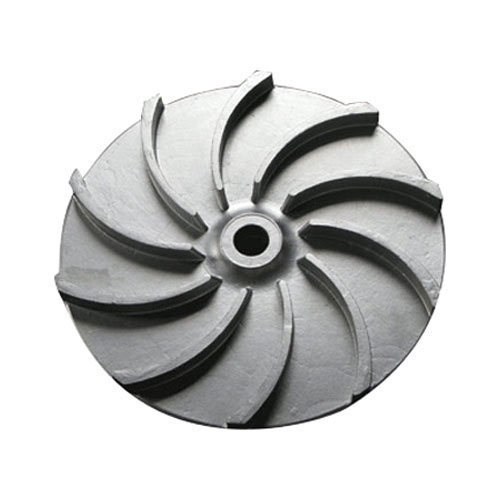The impeller or rotor impeller is used to raise pressure and fluid flow rate. This is the opposite of the turbine, which draws energy from the flowing fluid and reduces its pressure. It is most essential part of the centrifugal compressor and centrifugal pump.
In the centrifugal pump, an impeller accelerates the liquid out of the center of rotation and thus transfer energy from the motor, which directs the pump to the pumped liquid.
When the external movement of the fluid is limited by the pump chamber, the impeller speed changes in pressure. The impeller is usually a short cylinder with an open inlet (called an eye) to receive the incoming fluid, the fluid blade that presses substantially, and a slot, key or threaded hole to receive the crankshaft.
The impeller and main shaft fusion can generally be cheaper than separate. This short combination is called a “rotor.”
One side of the vane is free, and the other side is closed. The mechanical strength of the impeller increased by shrouds. They are also more economical than open impellers.
They can use for intermediate diameter pumps and liquids containing small amounts of suspended solids. Since recirculation and other losses are minimized, it is very important that there is a small gap between the impeller blades and the cover.
Types of Impellers
1) Open impeller
The open impeller has a blade hub mounted on the shaft. The blades are devoid of walls and make the open impeller slightly weaker than the closed or semi-closed impellers.
However, since the edge plate is not fixed to the edge of the blade insert, the blade tension is significantly reduced.
The liquid enters the impeller’s eye in the pump, where the vanes add energy and direct it to the discharge nozzle. The narrow distance between the blade and the pump plate or back plate prevents further fluid return.
Backlash can be adjusted to compensate for drum wear and blade edge to maintain performance over time.
Because the inside is visible, open butterflies are more accessible to inspect and maintain than closed ones. They can also be easily modified to change stream properties.
The open impellers operate in a certain narrow speed range. Open impellers are generally faster and easier to maintain. Open impellers most commonly use for small pumps and pumps that hold suspended solids.
Making sand locks does not simply mean closing the locks.
2) Semi-closed impellers
The semi-closed impeller has an additional rear wall for added strength. These impellers can pass a solid-liquid mixture but reduce efficiency.
One side of the vane is free, and the other side is closed. The shield increases mechanical strength. They are also more efficient than open impellers. They can be used for medium-diameter pumps and liquids containing small amounts of suspended solids.
Since recirculation and other losses are minimized, it is very important that there is a small gap between the impeller blades and the cover.
3) Closed or shrouded impellers
The enclosed impellers structure include additional front and rear walls on both sides of the blade to increase strength. It also reduces the thrust load on the shaft, increases life and reliability, and reduces shaft costs.
However, this more complex design, which involves using additional rings, makes closed impellers more difficult and expensive to build than open impellers.
The efficiency of the closed impeller decreases with increasing wear distance. However, adjusting the impeller cup clearance as an open impeller does not affect blade wear.
The closed impeller can use in a wider speed range than the open impeller. They are commonly used in large pumps and clean water applications. These impellers cannot effectively handle solids and are difficult to clean if blocked.
Applications of Impellers
- An impeller is most commonly used in a centrifugal compressor.
- The open impellers have no cap so that it can work faster. A closed impeller can have more steps than an open impeller.
- Used in centrifugal pumps.
- Some impellers look like small propellers but don’t have large blades. Among other purposes, they are also used to spray water to build fast boats.
- Since butterflies don’t have large blades to spin, they can spin faster than butterflies. The water forced through the impeller is channeled through the chamber to form a jet of water, which pushes the boat forward.
- The impellers in the mixing tank use to mix the liquid or slurry in the tank. They can use to combine materials in solid, liquid and gaseous forms. If there is a slope in conditions such as temperature or concentration, it is very important to mix the liquid in the tank.
- Air pumps, like Roots fans, use mesh impellers to inject air into the system. Applications include blast furnaces, ventilation systems and compressors for internal combustion engines.
